Mosaic adhesive: varieties and selection criteria

Today there is a huge number of different finishing materials, thanks to which you can create an original interior in the room, focusing on any area or finish the entire surface. Such products include mosaic tiles, whose decorative possibilities are striking in their diversity.

Types and composition
A wall in a room, lined with mosaics, or a whole pool - in any case, the result from the use of such products will exceed all expectations. Moreover, the laying of the tiles can be entrusted to the master, or you can do it yourself. But in order for the work to be carried out efficiently, a suitable adhesive composition is needed. Most modern and domestic manufacturers of building materials offer the consumer special adhesives for these works.


It is quite difficult to select the highest-quality adhesive composition that will save on consumption for 1 m2 of working area, since each type of product has individual characteristics and properties.
Mosaic adhesives are classified based on their composition. There are three main types of products.
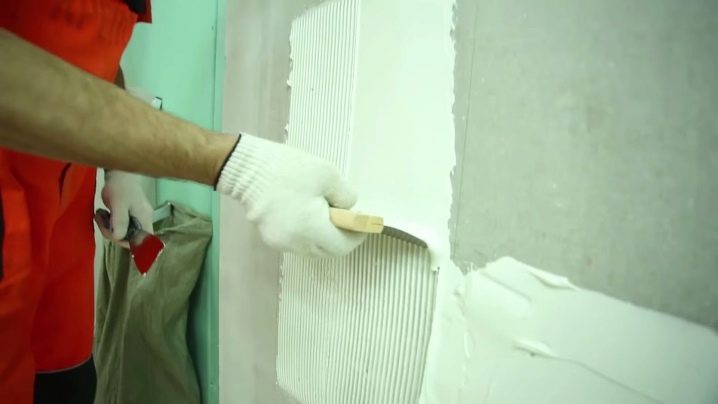
Dry composition
It is produced when white or gray cement is included in the mixture, due to which its color is set. Cement glue for work must be prepared - in the specified proportion, the powder is mixed with water or latex. The composition can be elastic, highly elastic and rigid. Each of the above adhesive solutions has a narrow scope of application, based on the type of surface from which it is necessary to fix the tile.
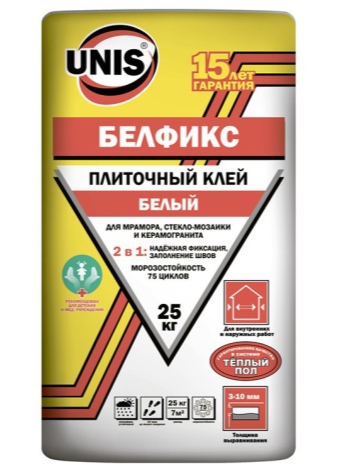
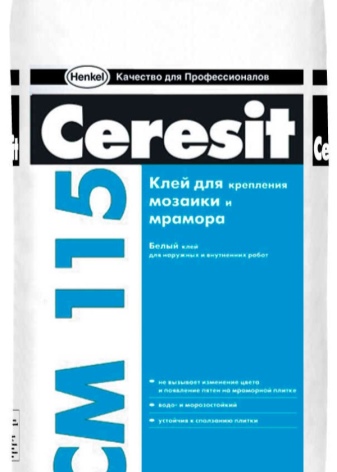
A hard mix is used when working with even mineral substrates, it can safely be used to process brick or plastered walls, foam blocks, concrete surfaces. Dry mixes have a positive feature that concerns their low cost. For non-standard cases, experts prefer to choose mixtures with good elasticity. The use of such products makes sense in those situations when it is required to lay mosaics on surfaces that do not absorb moisture and have little resistance to temperature fluctuations, for example, for facing "warm" floors.
Elastic compounds perfectly fix products on a base that is subject to vibration, which is important for rooms located in buildings close to the metro or railroad.
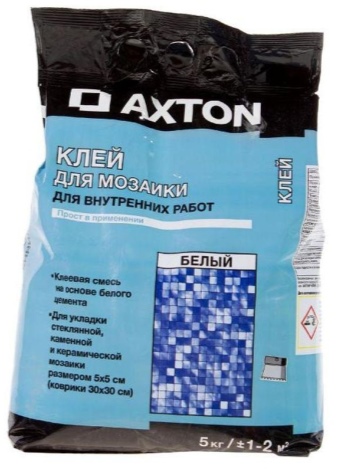
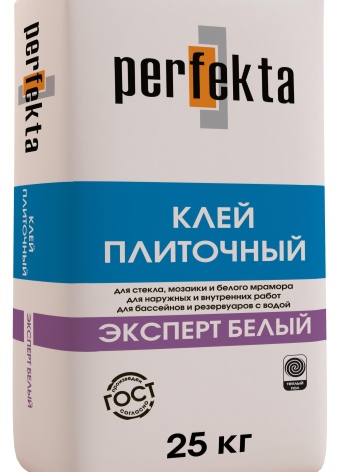
Dispersion adhesives
This mixture can be used immediately after purchase for mosaic work. It is a one-component adhesive, the main advantage of which is ease of use. It is convenient to apply the mixture to substrates in residential premises, since it does not generate any waste or dust when performing the assigned tasks. For surface treatment, you do not need a lot of funds, the mixture does not dry out and does not lose its properties, it does not need to be kneaded, since the glue in the container is already completely ready for use. After finishing the lining, the container with glue must be tightly closed with a lid. Ease of use of the product more than pays for its cost.
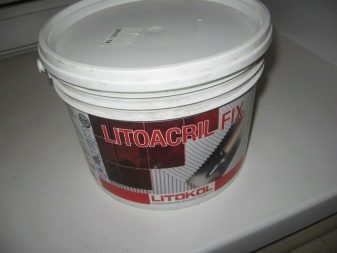

Two-component adhesive
The reactive composition includes a hardener and a base, which react with each other, due to which the product acquires the ability to reliably fix the tile.More in demand are products where the basis is an epoxy or polyurethane component.
The mortar is needed to perform the laborious tasks associated with mosaic tiling.
And since it does not contain water, the adhesive is used for substrates that are susceptible to moisture, in particular for stone surfaces.
It is also successfully used for glass, wood and plastic products.
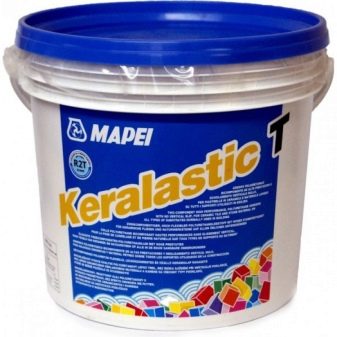
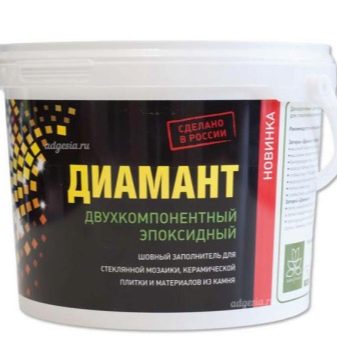
It takes some experience to work properly with such glue. - it is applied to a small area with quick and clear movements, since the mixture instantly hardens, after which it will no longer be possible to use it.
Therefore, the excess glue mass of the two-component composition must be promptly removed from the mosaic, since over time it will be quite problematic to remove it from the tile.
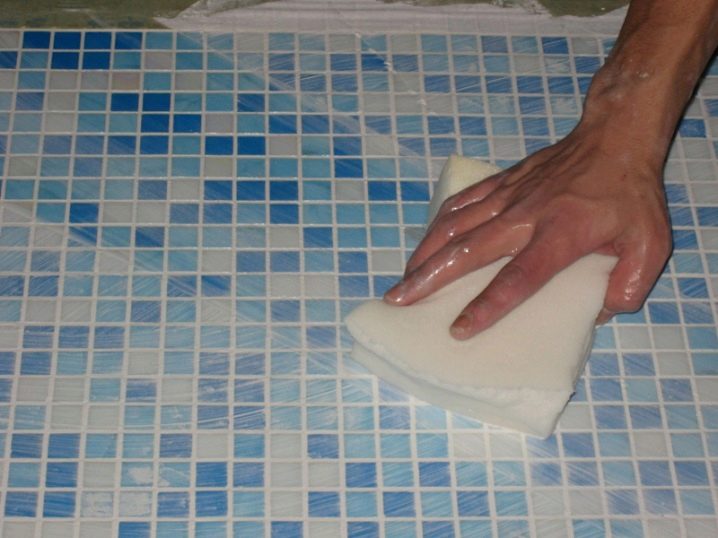
Which one is better to choose?
In order not to be mistaken with the choice of the composition, it is necessary to take into account the specifics of the base to be decorated, the area of operation of the room and the conditions. And also before buying a mosaic glue, it will be useful to take into account the time allotted for facing the base. For those cases where there is very little time allotted, it is better to prefer quick-drying products.
A solid and even surface will be an ideal base, since the application of the composition will not have any obstacles, the mosaic will be securely fixed on such a wall or ceiling.
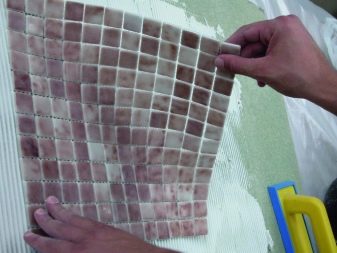
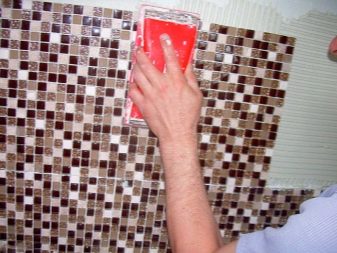
Facing plaster or cement screed is performed with high quality by any product. Decorating an uneven surface, laying mosaics on waterproofing or old ceramic tiles is best done with a highly elastic mixture.
An important nuance is the type of mosaic. Based on the specifics of the products, the choice of adhesive composition for work is carried out.
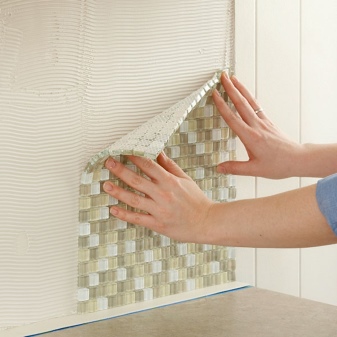
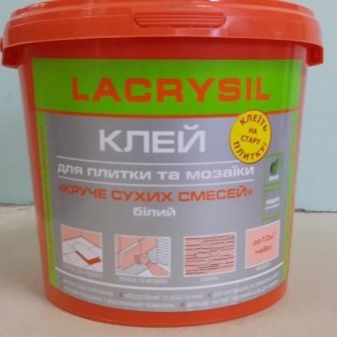
For glass elements, you need to carefully select a mixture for fixing, since glass tiles are very moody in terms of laying. The transparent glass elements show the base and materials below. For this kind of mosaic, it is worth buying a white mixture.
The gray composition applied under the tiles can spoil the ornament of the composition., which will adversely affect the appearance of the surface. You can opt for an adhesive solution, which contains white cement or polyurethane-based products.
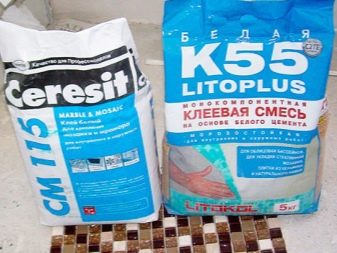
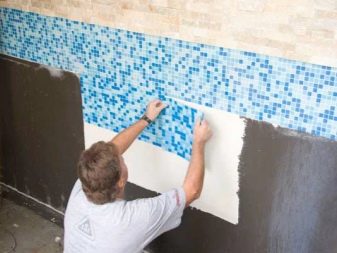
If a paper-based mirror glass mosaic is used for decoration, which is often laid in swimming pools, elastic glue of any color, even black, is suitable for the work. Such formulations that will function with moisture further include liquid latex.
Mosaic on mesh or paper has no fundamental differences in terms of the choice of glue. However, the technology of laying sheets requires marking the base for an even pattern. In the course of fixing such a mosaic, you need to monitor the complete immersion of the seamy side of the material into the composition.


In order to select the appropriate adhesive for mosaics made from natural stone, for example, marble decorative elements, its variety is first taken into account. Since some rocks can change their color on contact with moisture. For such work, it is better to purchase a cement or reactive composition.
Ceramic mosaic is resistant to water, therefore, in this case it is necessary to select an adhesive composition based on the type of surface for facing.
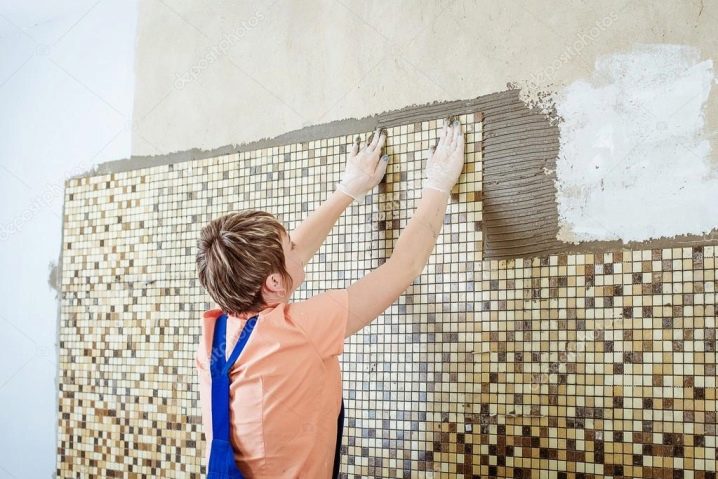
For "diamond" mosaic tiles, which is the most expensive type of decor that allows you to create a unique design in the room, special adhesives are used, they are included by the manufacturer in the product set and sold together.
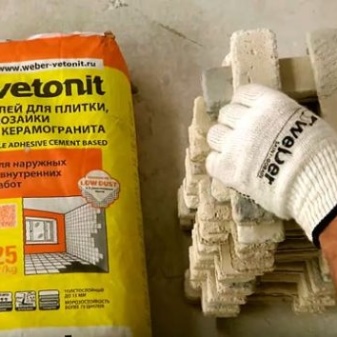

How to use it correctly?
A mosaic canvas consists of a large number of elements on a special basis - mesh, paper, as well as a foil backing. This product configuration provides a high level of flexibility, and the products can be cut into pieces of the desired size.
Adhesion of the adhesive to the substrate increases if the surface is primed.
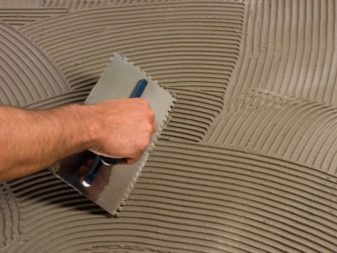
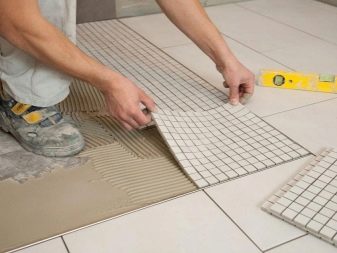
Based on the basis of the mosaic fabric, the gluing of the product is carried out according to a certain technology. Mesh base tiles are simply fixed to the surface. No further work is required. Cloths on a paper base are first fastened with the back side out to soak the base, after which it is removed.
After the product has been attached to the base, it must be leveled and sunk into the surface for an even arrangement of elements. Remaining glue in the joints between the tiles must be removed while still fresh using a trowel. This is followed by the most laborious process - grouting the joints between the parts.
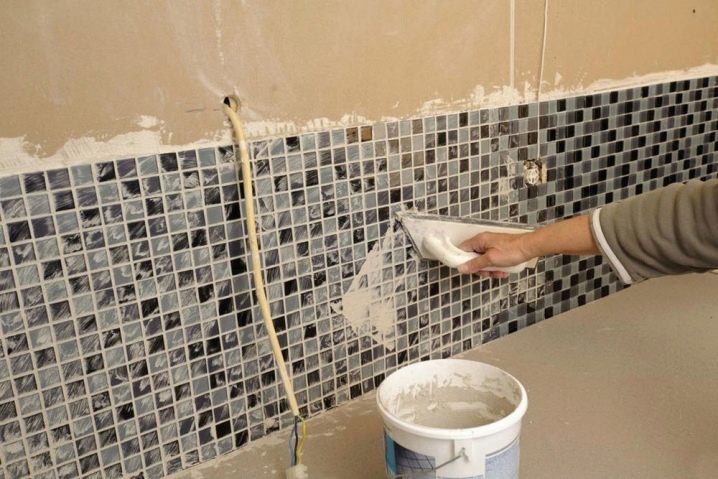
Stamps
There are times when, in order to save money, the craftsmen use ordinary or silicone tile adhesive for mosaic tiling. However, many formulations turn out to be unsuitable for such work in their consistency, since they will be too thick or, conversely, liquid. In the latter version, the canvas simply does not hold on to the base, and the presence of aggressive substances in the composition can harm the decorative material.

Therefore, for working with mosaics, it is necessary to purchase only specialized compositions from well-known manufacturers, for example, domestic Unis or Italian means Litokol K55, Lacrysil, Mosaik... The leaders in this segment are brands Ceresit and Knauf.
However, an important nuance is still the purchase of products that will not represent a low-quality fake under a well-known brand.
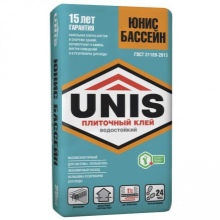

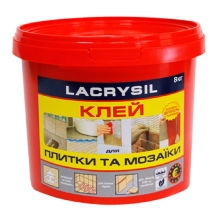
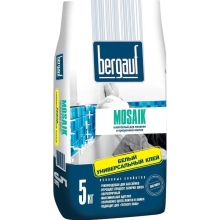
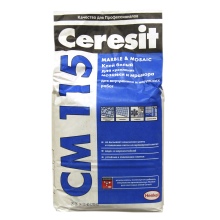

The packaging of the composition contains information indicating the scope of use of the glue, which relates to the possibility of working with transparent or translucent mosaics, as well as the use of products in residential premises, for outdoor cladding, in conditions of high humidity or in direct contact with water. Manufacturers of mosaic adhesives offer customers a wide range of quality products for all types of substrates and tile sheets made from a variety of materials.
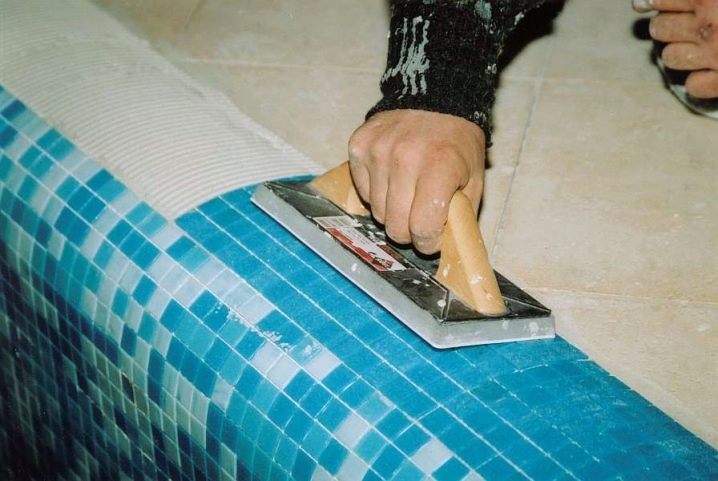
Watch a video on the topic.













The comment was sent successfully.